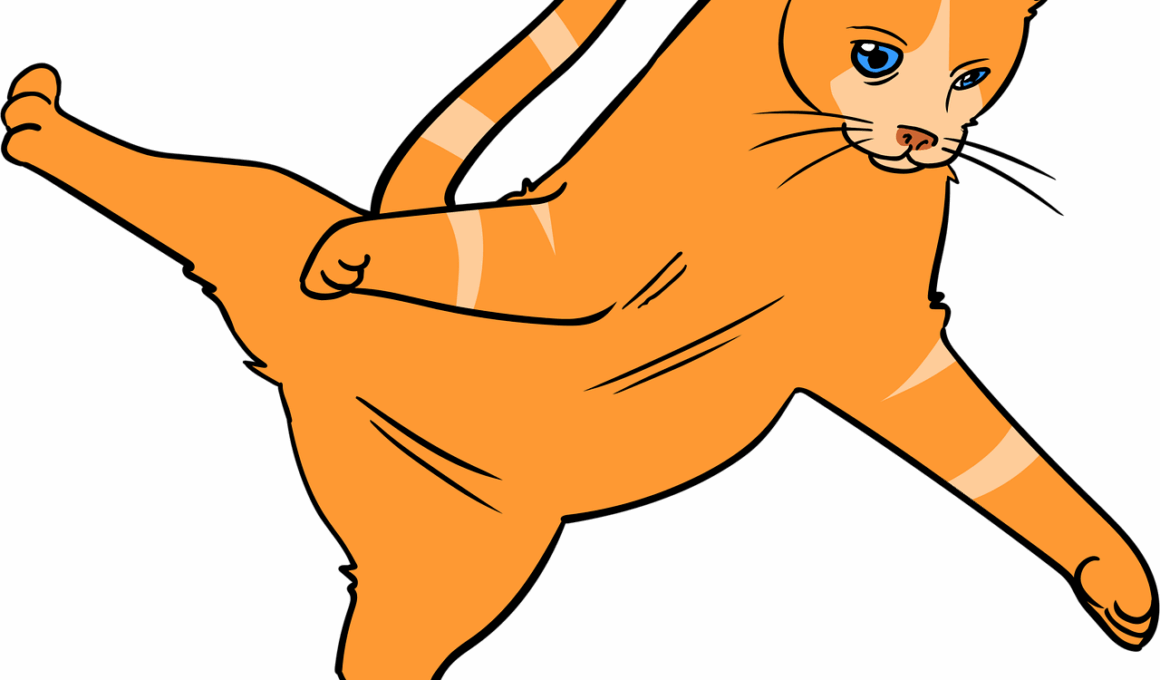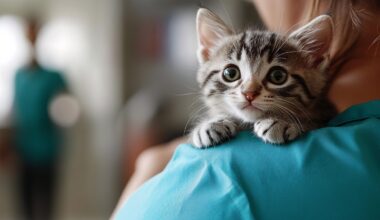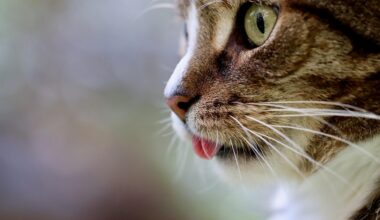Shooting Action Shots: Cat Photography Challenges Versus Other Pets
Cat photography offers unique challenges, especially when capturing action shots. Unlike dogs, cats are notoriously independent and often unpredictable. The key to obtaining stunning images lies in understanding feline behavior. Observing your cat’s patterns gives insight into the prime moments to capture their natural actions. While dogs may obey commands for posed shots, cats tend to do their own thing, making timing essential for action shots. Patience is crucial; you may wait long periods for that perfect leap or playful pounce. Additionally, having the proper equipment enhances performance. Fast shutter speeds freeze motion, allowing for crisp images, while high-quality lenses reduce motion blur. Shooting in continuous burst mode also captures several frames per second, helping to secure that one perfect moment amidst a flurry of motion. Using natural light is preferred as it provides the most flattering illumination. Avoiding flash will help retain your cat’s natural behavior. In turn, this approach breeds creativity by encouraging dynamic composition. Understanding these nuances of cat photography will elevate your results, helping to create compelling images that showcase their unique personalities and charm.
In comparison, dog photography comes with its own set of intricacies. Dogs, while they can be just as lively and unpredictable as cats, often exhibit obedience to commands, which can make them slightly easier to photograph. Posing them is a task that typically involves less waiting around. Many dogs enjoy playing fetch or running, which can be captured easily with less ambiguity. In contrast, the erratic nature of cats can complicate this process significantly. However, when incorporating elements of play into cat photography, it showcases their character effectively. Unlike dogs, whose enthusiasm can sometimes overshadow their moments of tranquility, cats frequently display bursts of energy followed by serene stillness. This contrast creates a rich tapestry to explore in photographs. To photograph a cat effectively, one must learn to anticipate their movements and emotions. Building a rapport with your cat often proves beneficial in capturing their true essence. While dog photography can yield fast-paced results, the subtleties in cat movements are often revealing. The final images can narrate stories of playfulness, warmth, and occasional mischief, presenting a wholly distinct aspect of pet photography.
Lighting plays a vital role in both cat and dog photography but varies in impact. Cats, for instance, benefit from dramatic lighting that enhances their features, especially the reflective quality in their eyes. Using soft diffused light elevates their natural beauty. Positioning your cat near a window can offer wonderful soft ligh and richness. Conversely, bright lighting can wash out their subtle fur details. Photographic success lies in experimenting with light sources, understanding that the warmth of sunlight generally offers the best results for capturing the intricate colors of their fur. Contrast is equally pivotal when photographing cats to discern their unique markings. Achieving the right light balance is often a trial-and-error process involving various setups. Alternatively, when working with dogs, particularly during outdoor photography, it’s crucial to compare how light affects them differently due to their larger size and varying fur lengths. Dogs may also need to be coaxed into the right light angle to avoid unflattering shades. Both types of photography require knowledge about light manipulation to enhance the subject’s features. Gaining experience with both pets will only add to your overarching proficiency as a photographer.
Equipment for Action Shots
When deciding on equipment for cat photography, choices vary in alignment with action shots. It is highly recommended to use cameras with rapid autofocus capabilities. While many modern cameras boast impressive technology, those featuring continuous shooting modes excel. They allow photographers to capture fast sequences of movements, an essential consideration for active cats. Lens choice also plays a vital role; a 50mm lens can be effective for close-up shots, while zoom lenses enable photographers to maintain distance without scaring the subject. Given the unpredictable nature of cats, having versatile gears, such as stabilizers or gimbals, could make a significant difference when aiming for dynamic photography. In some cases, attaching a telescope lens may provide unique perspectives, offering unusual views of your searching cat. Moreover, exploring the settings is fundamental before embarking on the shoot; familiarize yourself with all your camera features. While on an excursion to photograph cats at local parks or in your backyard, carry spare batteries and memory cards. This preparation ensures you capture all the spontaneous moments without technical hindrances. Invest wisely in your equipment, as superior tools translate into striking photographs that create lasting memories.
Techniques for cat photography differ significantly from those employed for dogs, highlighting their need for distinct approaches. To capture the best action shots, one must anticipate their next move. Unlike dogs that might run towards you on command, cats often dart toward unpredictable corners. Developing an understanding of their playful behavior proves to be a helpful skill for achieving captivating photos. One effective technique is to engage them with toys or treats, drawing their focus. Utilizing clickers or remote triggers may help capture candid moments without causing distractions or startling your cat. Likewise, shooting during the golden hour provides soft illumination, enhancing your action shots. Being patient and silent can also foster an environment where the cat feels secure and likely to behave organically. By blending previous experience and instinct, a photographer learns to react quickly to fleeting moments. This adaptability is paramount in ensuring that each shot showcases genuine expression and energy. Although dogs may offer a predictable subject with steady approaches, the artistry involved in cat photography requires subtler skills and a deeper emotional understanding between the photographer and the subject.
Common Challenges in Cat Photography
Common challenges in cat photography are often multifaceted. First and foremost, cats are inherently skittish creatures. Their instinctual need for safety means they can easily be startled, disrupting potential shots. Observing your cat’s moods is essential for determining optimal times for a shoot. A hesitant or restless cat won’t yield great results, but coaxing them into playful behavior can result in stunning captures. Environments also affect this dynamic; busy or loud settings can initiate fear responses in cats. For successful photography, create a tranquil setting conducive to relaxation before shooting. Additionally, unlike dogs that readily engage with their owners, cats may prefer solitude and would rather play independently than with a human. Therefore, providing alternative ways to engage your cat, such as enticing toys, can bring out their curiosity. Continuously striving to blend creativity with a cat’s natural impulses will often yield the most impactful images. Having patience is essential when working with cats and understanding their limits will contribute to the overall quality of your photographs. This unique challenge emphasizes the importance of being adaptive and mindful in the pursuit of artistic shots.
Ultimately, the joy of cat photography versus dog photography lies in discovering the essence of each pet. Cats represent a world of subtlety and grace, requiring a patient approach that reveals their personalities. The unpredictability of a cat’s actions and poses creates a dynamic yet challenging photography experience. By honing skills over time, photographers can develop a significant ability to capture the inner lives that cats share. Each photograph tells a unique story that resonates profoundly within the realm of pet photography. This journey essentially becomes about connecting with feline friends artistically and personally, resulting in cherished memories and stunning visuals. On the other hand, dog photography, while rewarding, tends to focus on clear obedience, energy, and direct interactions, fulfilling a different artistic quest. By embracing both forms of pet photography, one gains insights into diverse emotional expressions across species. Documenting these differences not only presents varied photographic styles but also enriches the overall experience as a photographer. Establishing connections with both cats and dogs ultimately shapes our ability to tell their stories both visually and emotionally, creating a rich tapestry within the photography genre.


